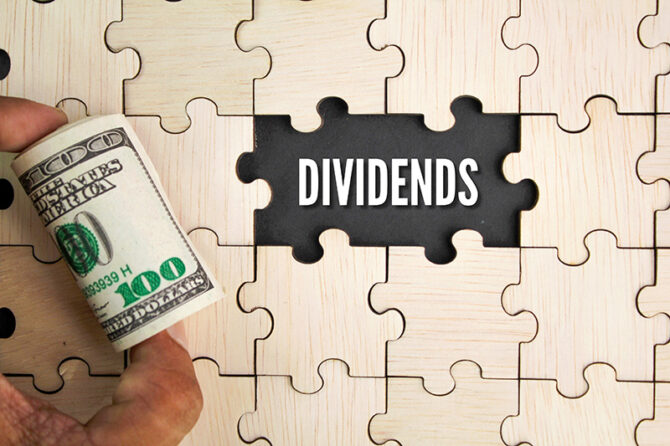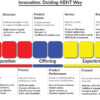
For decades, dividends have held a mythical charm in the Indian investment landscape. They’ve been seen as a reward for loyalty, a sign of a company’s stability, and a reliable source of income. However, the reality is far more nuanced. The “dividend conundrum” is a complex dance between investor expectations, growth ambitions, and the management’s vision for the company’s future.
Dividends: Not the Sole Driver of Investment Decisions
The fundamental fallacy lies in the belief that dividends are the primary driver of investment decisions. While they can be attractive, particularly for risk-averse investors seeking income, numerous factors, like a company’s growth potential, market leadership, and financial health, play a far more significant role. Think of Infosys, a poster child of Indian IT, consistently delivering exceptional growth despite rarely paying dividends. Its investors are handsomely rewarded through stock price appreciation.
Beyond the Growth vs. Dividend Dichotomy
The perception that dividends signify slow growth is another misconception. High-growth companies like HDFC Bank and Asian Paints have consistently rewarded shareholders with dividends alongside impressive expansion. Conversely, some “dividend darlings” like ITC have faced stagnation despite generous payouts.
Management’s Prudence: A Matter of Choice in Dividend Decisions
Dividends are a powerful tool in the hands of management, a lever that balances the needs of the company with the expectations of its shareholders. Whether or not to pay, and at what level, is a complex decision, not a mere mathematical calculation. It’s a dance between prudence, ambition, and the ever-shifting landscape of the market. Ultimately, dividends are a management decision about how best to utilize the company’s surplus cash. This decision is influenced by several factors:
- Investment Opportunities: A Call for Growth over Payout
A company brimming with promising expansion opportunities might find greater value in reinvesting its surplus cash. Think of Reliance Industries, whose aggressive foray into renewable energy demands substantial capital. Prioritizing such investments over immediate dividends demonstrates a management team’s commitment to long-term growth, a strategy that ultimately benefits shareholders through stock price appreciation. Conversely, a company with limited growth prospects might find dividends a more attractive way to incentivize investors. Imagine a mature FMCG giant with a saturated market; for them, returning excess cash through dividends ensures investor loyalty and minimizes pressure for unrealistic growth expectations.
- Debt Levels: The Balancing Act between Dividends and Stability
High debt can be a heavy anchor on a company’s financial health. Prioritizing debt reduction before dividends shows prudence and risk management. Tata Motors’ recent focus on deleveraging before resuming dividends exemplifies this approach. It prioritizes long-term financial stability over short-term shareholder appeasement. Conversely, a company with low debt might find dividends a way to share its success with investors. Consider Asian Paints’ consistent dividend policy even during periods of high growth. This approach balances the need for reinvestment with rewarding shareholders for their trust.
- Cash Flow Predictability: Weathering the Storms through Prudent Allocation
Companies with volatile cash flows, like those in the cyclical industries, face a unique challenge in dividend policy. Low or inconsistent payouts might not reflect a lack of profitability, but rather a prudent approach to managing cash reserves for future downturns. Imagine a construction company that experiences boom-and-bust cycles. Conserving cash during peak periods ensures it can weather lean periods without resorting to debt or diluting shareholder value. In contrast, companies with predictable cash flows, like utilities, can offer more stable and consistent dividend streams. This predictability attracts risk-averse investors seeking income, further solidifying the company’s financial standing.
- Fast Growth, Happy Shareholders: The Dividend-Growth Mix
The notion that high-growth companies shouldn’t pay dividends is a myth. Companies like Avenue Supermarts and Bajaj Finance have successfully integrated dividends into their growth strategies. This “dividend-growth mix” strikes a balance between rewarding shareholders and fuelling future expansion. Avenue Supermarts’ consistent dividend policy, coupled with its aggressive store expansion, exemplifies this approach. It demonstrates management’s commitment to both short-term and long-term value creation, attracting investors seeking both income and growth potential.
- The Art of Prudent Allocation: Beyond the Binary
Ultimately, the decision to pay dividends is not a binary choice between good and bad, growth and stability. It’s a nuanced art of capital allocation, where management weighs various factors to determine the most optimal use of the company’s surplus cash. A prudent dividend policy aligns with the company’s long-term vision, prioritizing sustainable growth while providing adequate returns to shareholders. It’s a testament to management’s ability to navigate the complex landscape of the market, balancing the needs of today with the aspirations of tomorrow.
By understanding the factors that influence dividend decisions, investors can move beyond simplistic labels and make informed investment choices. They can appreciate the complexities of management’s prudence and identify companies that are committed to creating long-term value for all stakeholders.

Fast Growth, Happy Shareholders: The Dividend-Growth Mix
Contrary to popular belief, several high-growth Indian companies like Avenue Supermarts and Bajaj Finance have incorporated dividends into their capital allocation strategies. This balanced approach allows them to reward shareholders while maintaining sufficient funds for future expansion.
The Good, the Bad, and the Ugly: Demystifying Dividend Quality
Not all dividends are created equal. A “good” dividend arises from a company’s inability to efficiently reinvest its excess cash. For example, a company with limited growth opportunities might find it more beneficial to distribute cash to shareholders. Conversely, a “bad” dividend, one that compromises future growth potential, can be detrimental. Imagine a cash-strapped company borrowing to pay dividends – a recipe for financial distress.
Beyond the Binary: A Nuanced Approach
Finally, the “dividend conundrum” isn’t about whether dividends are good or bad. It’s about understanding the underlying rationale behind them. Investors should focus on a company’s overall financial health, growth prospects, and management’s capital allocation strategy. A dividend policy that aligns with the company’s long-term vision and doesn’t compromise future growth is ultimately what matters most.
By moving beyond the simplistic dividend-growth dichotomy and acknowledging the complexities of management’s decision-making, Indian investors can make more informed choices about their investments. Remember, dividends are just one piece of the puzzle, and understanding the bigger picture is crucial for navigating the ever-evolving Indian market.
Prof. Dr. Prahlada N. B
18 December 2023
Bengaluru.

















Nicely Written and Valuable Info
ReplyPrahlada Sir ,
Definitely 'Dividends' paid by companies, on a regular basis will to some extent influence investor confidence, attract long-term shareholders & potentially impact the company's access to capital.
A company's dividend policy should always be evaluated within the context of it's overall financial strategy & growth prospects.
ReplyYes, investing just for the sake of dividends shows lack of vision about the future growth. However there are companies which balance both. One such company is HCL Tech which balances both very well,high growth and high dividends. An eye opener article for the novice in the field.
Reply